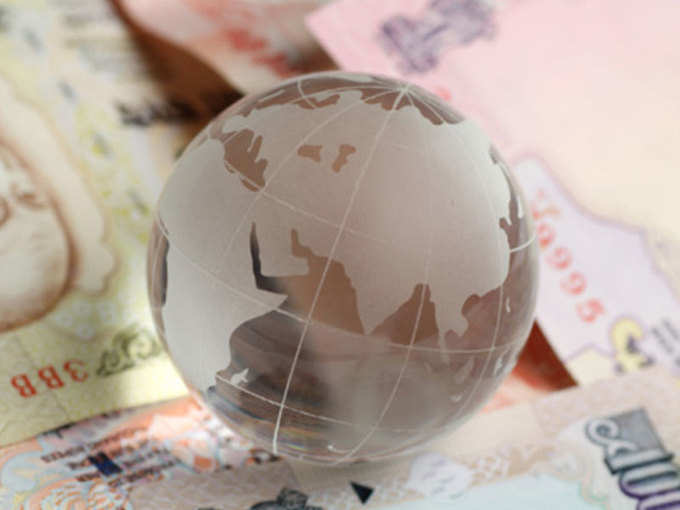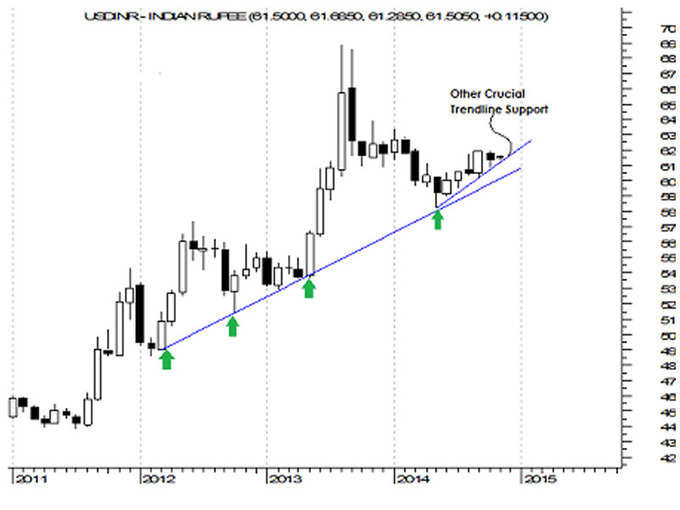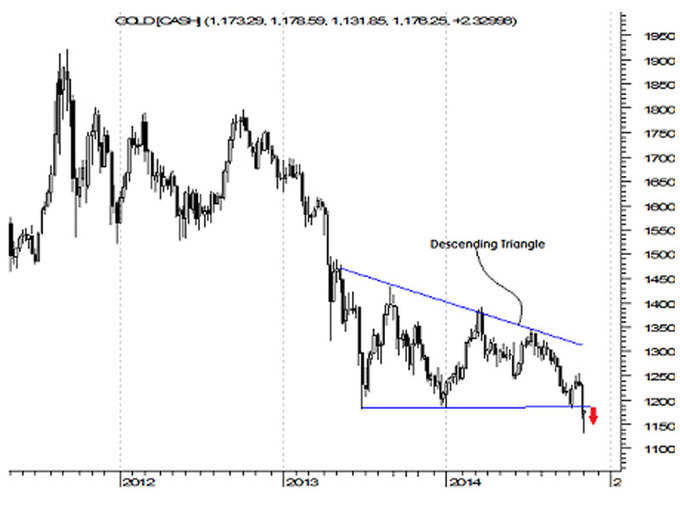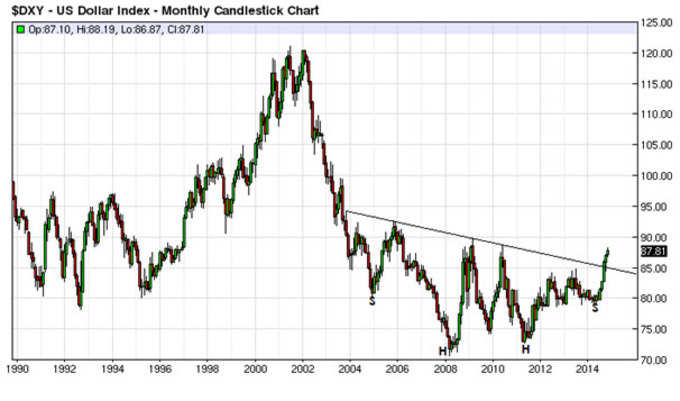
With the help of a technical analysis, let’s check out whether the broader outperformance of rupee is going to continue or shall we see some depreciation in rupee going forward.
The Currency Chart

As could be seen from the charts USD-INR has a strong support placed at 60.50 levels with other crucial trend line support placed at 61/61.2 levels. By looking at the charts, we feel USD-INR pair would have probably bottomed and any dips could be used an opportunity to buy.
Inter-market Analysis
Over a period of time, emphasis in the technical world has shifted from single market work to a more inter-market approach. In an increasingly interrelated financial world, the ability to study all markets gives Technical Analysts a huge advantage. No markets move in isolation and analysis of one market should include all the others. The four major groups are stocks, bonds, commodities and currencies, of which, dollar and commodities trend in opposite directions. We believe falling commodities especially Gold and Crude will continue to have a positive effect on USD.

Gold has recently given a breakdown from descending triangle continuation pattern and could further fall to lower levels. Given this context, it is likely that dollar will strengthen further across other global currencies.
Significant underperformance of INR vis-a-vis equities
We have seen
Dollar Index Chart
We have seen Dollar Index giving breakout out from “Complex Inverse Head and Shoulder Pattern”. A complex “Inverse Head and Shoulder pattern” is a variance of standard “Inverse Head and Shoulder Pattern” in which we could have 2 Heads and/or numerous shoulders. However, the trading psychology remains the same. The 2 heads on the charts as can be seen by “H” can also be taken as a “Double Bottom formation”. Irrespective of whichever chart pattern we take, the view on Dollar Index remains upbeat.

Inflation Rate Differentials and purchasing power Parity forecasts that the exchange rate will change to offset price changes due to inflation. For example if prices in India (Inflation) will increase by 8% and prices in US (Inflation) will increase by 2%, the inflation differential between the two countries would be (8%-2%= 6%). This means that prices in India are expected to rise faster relative to prices in USA. In this situation, the purchasing Power Parity approach would forecast that the INR would have to depreciate by approximately 6% to keep prices between both countries relatively equal.
Interest rate parity is a theory, which states that the interest rate differential between two countries is equal to the differential between the forward exchange rate and the spot exchange rate. Interest rate parity plays an essential role in forward exchange markets, connecting
With key interest rates and inflation still significantly higher in India than the US, we believe rupee has a strong base at 59.50, and could even probably end the current financial year i.e. by March 2015 at 66/68 levels.
This article is submitted by www.moneyworks4me.com